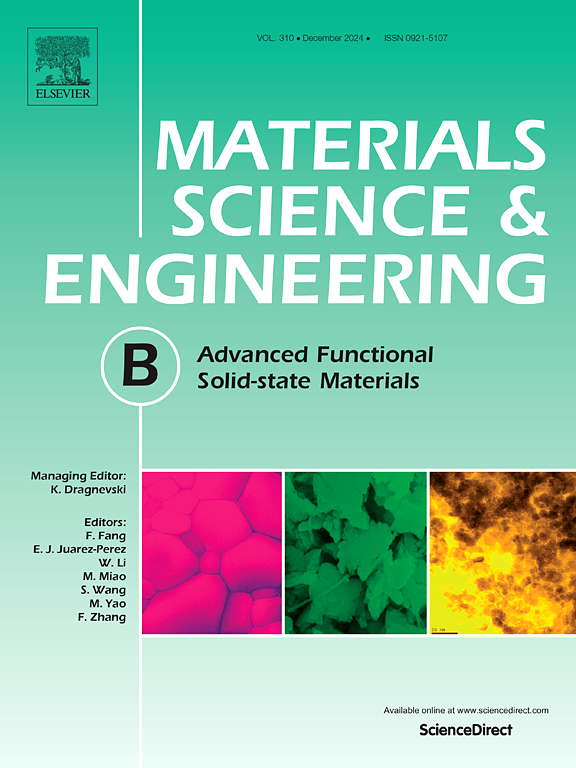黑木香叶提取物生物合成SrO纳米颗粒的高性能光催化和抗菌潜力及其多功能应用评价
IF 4.6
3区 材料科学
Q2 MATERIALS SCIENCE, MULTIDISCIPLINARY
引用次数: 0
摘要
本研究以黑木香叶提取物为还原剂和稳定剂,绿色合成氧化锶纳米颗粒。提取物中的植物化学物质有效还原Sr2+离子,通过热分解形成SrO纳米颗粒。结构分析证实形成了平均晶粒尺寸为22 nm的立方相SrO纳米颗粒。红外光谱显示纳米颗粒表面存在金属-氧键和生物活性化合物。UV-DRS分析确定带隙为2.77 eV,表明光催化电位。TEM和FE-SEM显示均匀分散的球形纳米颗粒,而EDX证实了锶和氧的存在。SrO纳米颗粒在可见光下能有效降解孔雀石绿染料,并表现出对肺炎克雷伯菌和金黄色葡萄球菌的抗菌活性。以黑木香提取物为原料的无化学物质、绿色合成纳米SrO提供了一种新的、可持续的方法,在废水处理和生物医学领域具有广阔的应用前景。本文章由计算机程序翻译,如有差异,请以英文原文为准。

High-performance photocatalyst and antimicrobial potentials of biosynthesized SrO nanoparticles using Cassia auriculata leaf extract and evaluating their multifunctional applications
This study presents the green synthesis of strontium oxide (SrO) nanoparticles using Cassia auriculata leaf extract as a reducing and stabilizing agent. The phytochemicals in the extract effectively reduced Sr2+ ions, forming SrO nanoparticles through thermal decomposition. Structural analysis confirmed the formation of cubic-phase SrO nanoparticles with an average crystallite size of 22 nm. FTIR spectroscopy revealed the presence of metal–oxygen bonds and bioactive compounds on the nanoparticle surface. UV-DRS analysis determined a bandgap of 2.77 eV, indicating photocatalytic potential. TEM and FE-SEM showed uniformly dispersed, spherical-shaped nanoparticles, while EDX confirmed the presence of strontium and oxygen. The SrO nanoparticles effectively degraded malachite green dye under visible light and exhibited antibacterial activity against Klebsiella pneumoniae and Staphylococcus aureus. The chemical-free, green synthesis of SrO nanoparticles using Cassia auriculata extract offers a novel, sustainable approach with promising applications in wastewater treatment and biomedical fields.
求助全文
通过发布文献求助,成功后即可免费获取论文全文。
去求助
来源期刊

Materials Science and Engineering: B
工程技术-材料科学:综合
CiteScore
5.60
自引率
2.80%
发文量
481
审稿时长
3.5 months
期刊介绍:
The journal provides an international medium for the publication of theoretical and experimental studies and reviews related to the electronic, electrochemical, ionic, magnetic, optical, and biosensing properties of solid state materials in bulk, thin film and particulate forms. Papers dealing with synthesis, processing, characterization, structure, physical properties and computational aspects of nano-crystalline, crystalline, amorphous and glassy forms of ceramics, semiconductors, layered insertion compounds, low-dimensional compounds and systems, fast-ion conductors, polymers and dielectrics are viewed as suitable for publication. Articles focused on nano-structured aspects of these advanced solid-state materials will also be considered suitable.
 求助内容:
求助内容: 应助结果提醒方式:
应助结果提醒方式:


